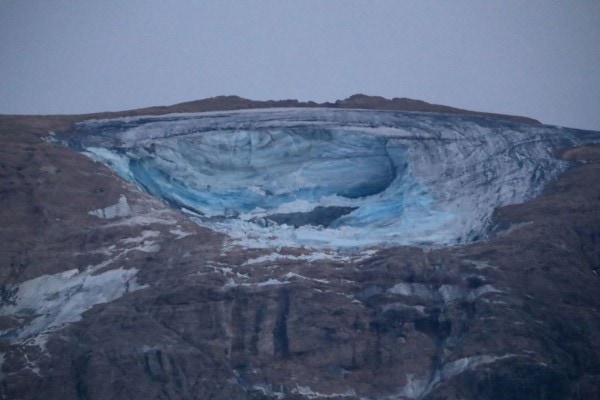An alpine glacier from Marmolada peak in Italy slid down Sunday afternoon, July 3. It killed at least six people and injured eight other hikers climbing a popular trail. The matter was confirmed by the authorities, who considered the area still unsafe days after the demise of the ice avalanche.
The avalanche of snow, ice, and rock that struck hikers on the mountainside of the Dolomites was partly due to a glacier collapse. Dispatchers were forced to postpone search and rescue activities on Sunday due to fears that more avalanches could be on their way to the same site mountaineers muster strong.

Initial examination of the disaster allegedly revealed that a rock disconnect led to the creation of an opening in the event, which led to the sudden and permanent catastrophe. Local authorities also considered that a local heat wave in Italy could have been the cause of the event.
Situated in the Italian Alps, the Dolomites traverse all the way to the shores of southern Switzerland, southern Germany, southeastern France, southern Austria, northwestern Slovenia, and Liechtenstein. These mountains are notorious for encountering natural catastrophes, such as disappearances.
Marmolada Glacier Collapse
Gianpaolo Bottacin, a member of the Local Civil Protection Collaborative, mentioned the crisis associated with the collapse was still continuing, estimated to become about 15 unaccounted for, according to The Guardian.
The looming danger of the Marmolada glacier results from the potential instability in the Dolomite mountain range. A likely reaction to the recent heatwave in the nearby regions could only be assured after a thorough investigation by experts and climatologists.
The National Alpine and Cave Rescue Corp likewise endeavored to seek the friends and families of likely survivors and victims from the ice landslide – already a gone notorious to be Alpine Glacier Collapse on the climbers. It provided a telephone number to give to acquaintances for individuals who failed to emerge after the havoc of the snow slide.
Walter Milan, the spokesman for the ski resort, said rescue personnel were checking plate numbers to determine how many people had been the avalanche victim. Before the postponement of the search initiative, the operation consisted of at least five helicopters and rescue dogs. Marmolada has been described as the tallest peak in the Alps and the prime lure for the climbers to atop.
Ice Avalanche and Heatwave
The Alpine rescue operation determined that a fatal ice mountain named the “serac” collapsed on Marmolada Glacier, as reported in CNN. The Swiss rescuers’ preliminary analysis offered a possible reason for the avalanche, yet other reports believed that the heat extreme in Italy since late June could have been involved.
On June 12, local temperatures in Italy and western Europe were at approximately 10 degrees Celsius (50 degrees Fahrenheit) at their peak, and on June 14, the Marmolada avalanches occurred in the Dolomites amid local temperatures of approximately 10 degrees Celsius (50 degrees Fahrenheit) at the mountain’s peak. No immediate reports suggested that the avalanches derived from human activity or other factors related to underground movement or any kind of vibration.
One of the biggest reasons avalanche fatalities have risen lately is the rise in mountain sports and recreation, including hiking, skiing, and winter sports. This has led experts at the University of Wisconsin Eau Claire (UWEC) to focus their research on expanding and promoting mountain tourism and encouraging outdoor activities.
Acclaimed Climate Reporter Victoria Seabrook‘s Immediate Response
The Marmolada glacier collapse is a natural hazard, in this case, resulting from climate change – so is the opinion of the climate scientists. How can they still be so sure? The steep part of the Marmolada giving way depended on sub-zero temperature to remain stable.
Hotter surrounding caused by man-created climate change convert ice into water. That is what triggers instability, collapses and likely disasters.
Over a quarter-century from now, glacier ice will likely continue melting at a faster rate than has ever been recorded across Alpine regions. The oppressive heat in Italy during the summer has already hit 10 degrees Celsius, and there have already been a record-high number of heat records set in various other locations in the country.
Recent droughts and ongoing water shortages in Cyrenaica risk an unforeseen food shortage. It is a net exporter of food, and its northern mountains and lakes co-developed it with tourists. The adverse effect of climate change is up and close, sufficient to wreak havoc. They are immediate and now. Do not dare think them distant.
